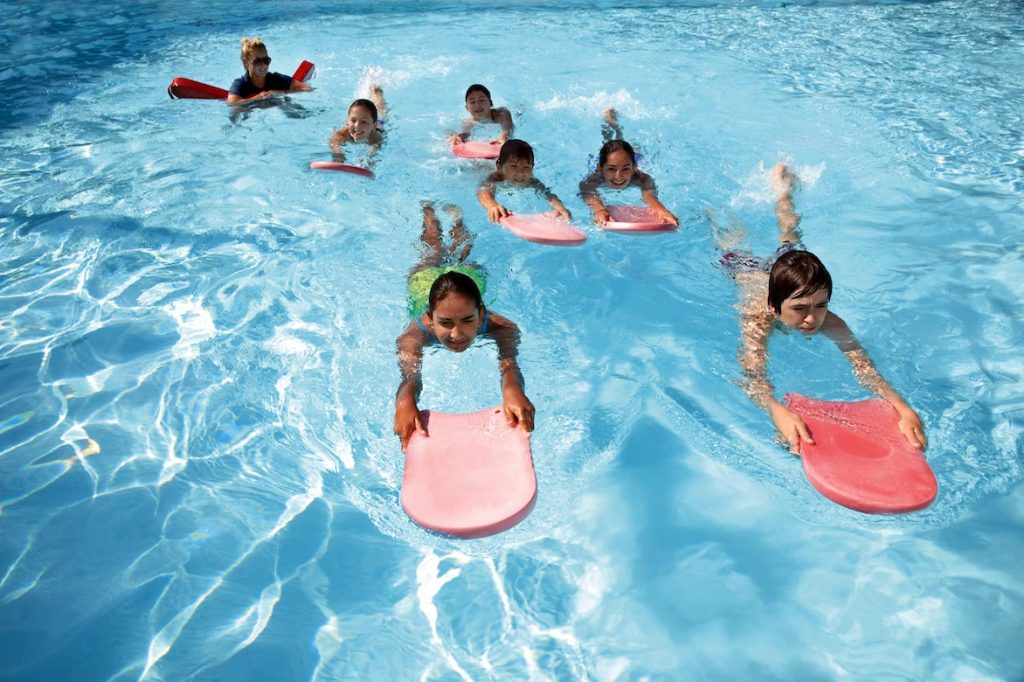 Swimming is a vital life skill and a recreational activity that offers numerous physical, psychological, and social benefits. This paper explores the significance of swimming lessons for individuals of varying age groups and abilities, focusing on adults, children, and individuals with special needs. The paper emphasizes the importance of an inclusive approach to swimming instruction, detailing the unique considerations and strategies required to ensure effective and empowering learning experiences for all participants. By examining the benefits, challenges, and instructional methodologies for each population, this paper aims to underscore the need for comprehensive and adaptable swimming lesson programs that cater to diverse learners.
Swimming is a vital life skill and a recreational activity that offers numerous physical, psychological, and social benefits. This paper explores the significance of swimming lessons for individuals of varying age groups and abilities, focusing on adults, children, and individuals with special needs. The paper emphasizes the importance of an inclusive approach to swimming instruction, detailing the unique considerations and strategies required to ensure effective and empowering learning experiences for all participants. By examining the benefits, challenges, and instructional methodologies for each population, this paper aims to underscore the need for comprehensive and adaptable swimming lesson programs that cater to diverse learners.
1. Introduction:
Swimming is not only a fundamental survival skill but also a rewarding physical activity that promotes cardiovascular fitness, muscular strength, flexibility, and overall well-being. While swimming is traditionally introduced during childhood, adults and individuals with special needs can also greatly benefit from acquiring swimming skills. This paper discusses the importance of providing comprehensive swimming lessons that are tailored to the needs of adults, children, and individuals with special needs, recognizing the potential for enhancing physical, cognitive, and emotional development.
2. Benefits of Swimming Lessons:
Swimming lessons offer a wide array of benefits, including improved cardiovascular health, enhanced muscular endurance, increased self-confidence, and stress relief. For children, early exposure to swimming can foster water safety awareness, physical coordination, and social interactions. Individuals with special needs can experience improved motor skills, sensory integration, and heightened self-esteem through swimming instruction. Recognizing these benefits highlights the importance of accessible swimming lesson programs that cater to a diverse range of learners.
3. Swimming Lessons for Adults:
Adults often encounter unique challenges when learning to swim, such as fear of water, self-consciousness, and limited time availability. Effective swimming lesson programs for adults should incorporate empathetic teaching methods, gradual exposure to water, and opportunities for skill-building. Integrating adult-specific goals, such as stress reduction and weight management, can enhance the motivation and overall experience of adult learners.
4. Swimming Lessons for Children:
Swimming lessons for children should prioritize safety, water acclimatization, and the development of fundamental swimming techniques. Engaging and interactive instructional methods, combined with a child-centered approach, contribute to effective learning outcomes. Encouraging parental involvement and emphasizing water safety education can foster a lifelong appreciation for swimming and aquatic activities.
5. Swimming Lessons for Individuals with Special Needs:
Individuals with special needs encompass a diverse spectrum of abilities and challenges. Swimming lessons for this population require careful consideration of sensory sensitivities, communication barriers, and individualized adaptations. Instructors should employ patient, person-centered teaching techniques, creating a supportive and non-judgmental learning environment. Collaborating with healthcare professionals and specialists can aid in developing tailored lesson plans that address specific needs and goals.
6. Inclusive Teaching Strategies:
To ensure effective and inclusive swimming lessons, instructors should adopt adaptable teaching strategies. These strategies may include visual aids, tactile cues, clear communication, and individualized goal-setting. Incorporating assistive equipment and modifying teaching techniques based on the learner’s needs can enhance skill acquisition and foster a sense of accomplishment.
7. Overcoming Challenges:
Challenges in teaching swimming to diverse populations include addressing water-related fears, cultural sensitivities, and logistical considerations. Instructors should undergo specialized training to enhance their understanding of different learning styles and potential barriers. Collaborative partnerships with community organizations, adaptive sports programs, and advocacy groups can further facilitate the implementation of inclusive swimming lesson initiatives.
8. Conclusion:
Swimming lessons offer a transformative experience for individuals of all ages and abilities. By tailoring instruction to meet the unique needs of adults, children, and individuals with special needs, swimming instructors can empower learners to overcome challenges, develop essential life skills, and enjoy the numerous physical and psychological benefits of aquatic activities. Embracing an inclusive approach to swimming instruction not only enhances individual well-being but also contributes to the creation of a more equitable and accessible society.
Kenny is a baby Bottlenose dolphin, of the genus Tursiops, one of the most common and well-known members of the family Delphinidae, the family of oceanic dolphin. He is very playful and friendly and loves to frequently leap above the water surface. Kenny plays with water toys, enjoys making bubble rings, and plays well with other dolphins or other animals.
